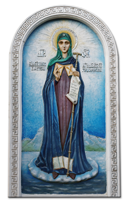What is POS Software?
What is POS Software?
In a nutshell, POS Software is computer software that runs on a computer at your businesses Point of Sale that allows you to easily sell your products and services.
To elaborate on that, first of all let's define what POS means...
POS is an abbreviation of Point of Sale and is taken to mean the physical area within your business premises where you sell products and/or services face to face with your customers.
You might sell products and services to your customers via the telephone or via mail order, and you may logically consider that this is your Point of Sale (in many ways it is), however Point of Sale is typically considered to be a location in your premises where you are face to face with your customers.
Why would I need POS Software?
Back in the day...

If you think about the way we used to do business at the POS in the old days before electricity, retail shops would have a wooden cash drawer (which was literally a drawer under the counter) and all sales would be written out and recorded on paper. Money would be taken and placed in the cash drawer and change given from the cash drawer.
At the end of the day, the sales would have to be manually added up from the written paper records and the money in the till counted. If everything added up then all well and good - the money could be banked or put in the safe and then the sales records would be manually entered into a sales ledger (a ledger being nothing more than a big paper book).
So as you can imagine, this system worked well for probably hundreds of years but it suffered a number of drawbacks:
- A lot of manual effort was required at the end of the day to total up all the sales.
- Receipts and sales had to be manually written down and added up which was slow to do and error prone.
- As you sold your products, you had no easy way of knowing how many you had left in stock without physically counting them.
Enter the Cash Register...
To improve the quality of life of the average shop keeper, Cash Registers were introduced in about 1880. These were nothing more than mechanical adding machines but they at least allowed the shop keeper to ring up the sale items one by one and then pull a lever to be given the sale total.
While the first cash registers could improve efficiency on the sales floor, they didn't really help with end of day cashing up or recording of sales into the sales ledgers, and you still had to manually write out receipts.
The Rise of Electronic Tills
Moving on a bit, electronic tills (which are still widely used today, though their use is declining) moved a long way towards automating many POS tasks, allowing you to not only add up the total price of a sale, but also allowing you to automatically print till receipts.
Many electronic tills also allow you to print out the days sales totals (known as X or Z reports) at the end of the day saving you from having to manually add up the total of all the sales.
However, electronic tills have their limitations and although they are very relevant to the right type of business even today, there are certain areas in which they fall down. Typical limitations of electronic tills are as follows:
- Poor ability to keep track of stock levels
- Poor support for barcode scanning of products at the POS
- Generally poor connectivity to other devices such as other tills or computers making it difficult to run multiple tills or to extract sales data for inclusion in an accounting system.
- Poor support for sales analysis making it difficult to see what types of things you have been selling through the till.
All you need is POS Software...
POS Software is the latest stage of evolution when it comes to retail point of sale systems, and gives you the maximum possible functionality when it comes to making and recording sales.
POS Software overcomes all of the limitations of traditional cash registers and electronic tills and gives you the following features (among others):
- Ability to scan products into a sale via barcodes and automatically total the sale
- Print detailed till receipts (including credit card transactions if present)
- Advanced reporting such as X & Z reports, sales by product type, sales for any given period of time
- Stock control software facilities such as checking how much of a product is in stock, and reporting to notify you of products that are running low on stock.
- Support for connecting multiple tills together and central reporting
- Integration with eCommerce websites, so that stock levels at the till are synchronised with stock levels on the web

